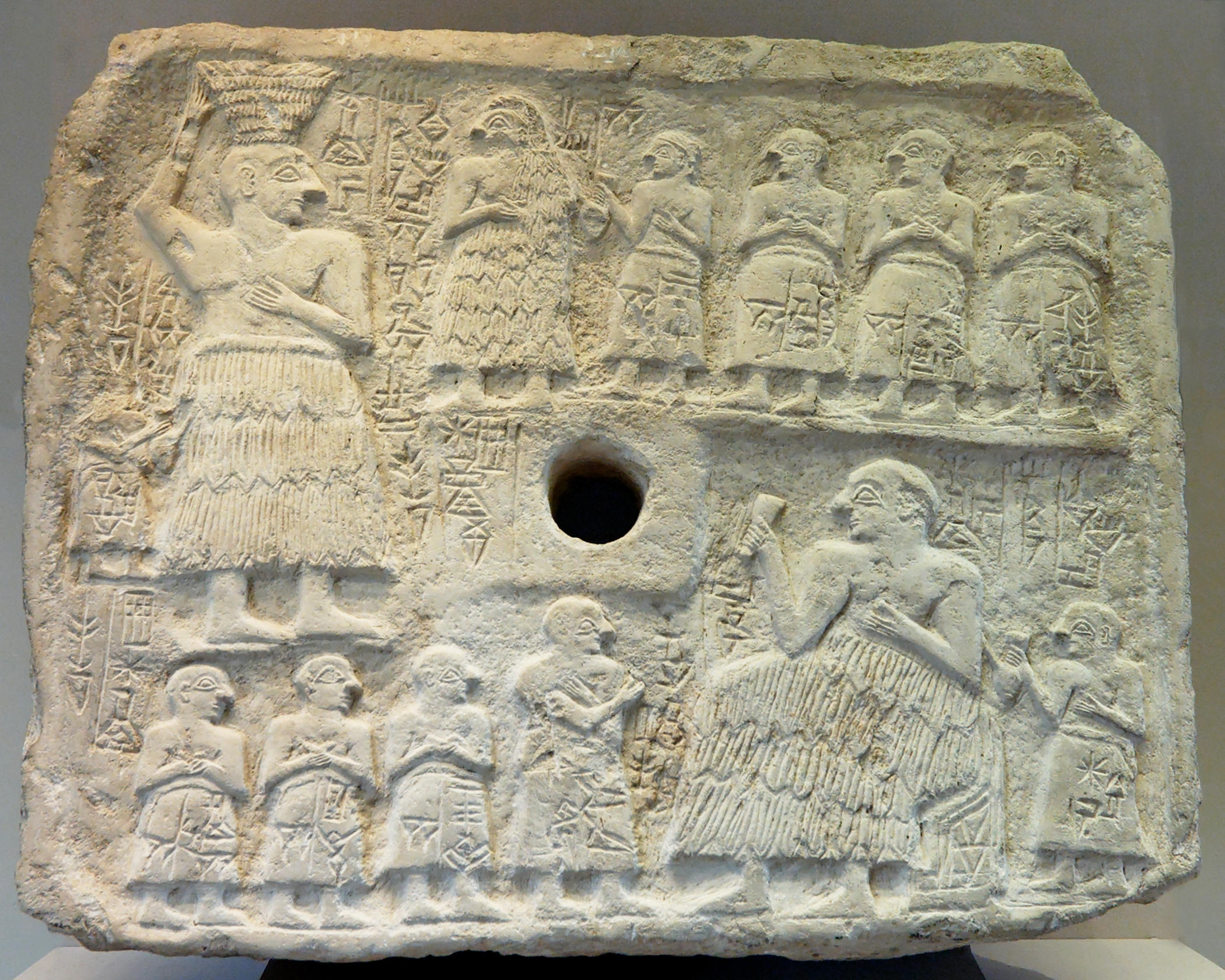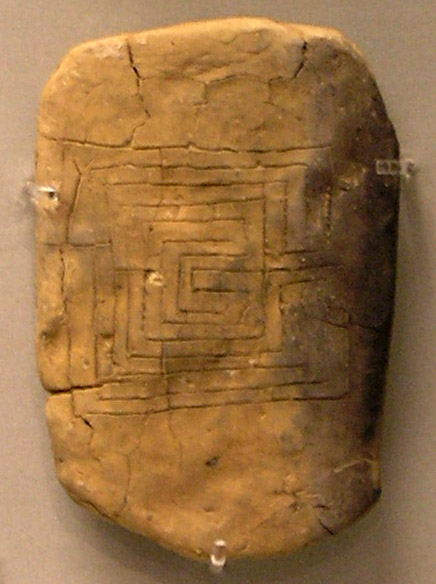|
Ninšatapada
Ninšatapada (also romanized as Ninshatapada; active 1800 BCE) was a Mesopotamian princess from the Old Babylonian dynasty of Uruk. She is known from a letter addressed to Rim-Sîn I, in which she implores him to restore her to her former position as a high priestess of Meslamtaea. It was incorporated into the curriculum of Mesopotamian scribal schools. Biography Ninšatapada was a princess from the Old Babylonian dynasty of Uruk. Her father was Sîn-kāšid, who reigned over this city in the nineteenth century BCE. She was most likely born when he was still young, in the third quarter of said century. Since no information about her grandfather is known, and her father originally served as the governor ('' šakkanakkum'') of Durum, which was fortified by Ishme-Dagan, it has been suggested that her family might have hailed from Isin. She was the high priestess (''nin-dingir'') of Meslamtaea. It is uncertain which king of Uruk was responsible for her appointment, though Willia ... [...More Info...] [...Related Items...] OR: [Wikipedia] [Google] [Baidu] |
Lugal-irra And Meslamta-ea
Lugal-irra () and Meslamta-ea () were a pair of Mesopotamian gods who typically appear together in cuneiform texts and were described as the "divine twins" (Maštabba). They were regarded as warrior gods and as protectors of doors, possibly due to their role as the gatekeepers of the underworld. In Mesopotamian astronomy they came to be associated with a pair of stars known as the "Great Twins", Alpha Geminorum and Beta Geminorum. They were both closely associated with Nergal, and could be either regarded as members of his court or equated with him. Their cult centers were Kisiga and Dūrum. While no major sanctuaries dedicated to them are attested elsewhere, they were nonetheless worshiped in multiple other cities. Names Lugal-irra and Meslamta-ea usually appear together in Mesopotamian texts. Typically Lugal-irra was followed by Meslamta-ea, though instances of the order being reversed are known too. While attestations of Lugal-irra without Meslamta-ea are known, they are con ... [...More Info...] [...Related Items...] OR: [Wikipedia] [Google] [Baidu] |
Enheduanna
Enheduanna ( , also transliteration, transliterated as , , or variants; ) was the (high) priestess of the moon god Sin (mythology), Nanna (Sīn) in the Sumerian city-state of Ur in the reign of her father, Sargon of Akkad ( BCE). She was likely appointed by her father as the leader of the religious group at Ur to cement ties between the Akkadian religion of her father and the native Sumerian religion. Enheduanna has been celebrated as the earliest known named author in world history. A number of works in Sumerian literature, such as the ''Exaltation of Inanna'' feature her as the first-person narrator, and other works, such as the ''Sumerian Temple Hymns'' may identify her as their author. However, there is considerable debate among modern Assyriologists based on linguistic and archaeological grounds as to whether or not she actually wrote or composed any of the rediscovered works that have been attributed to her. Additionally, the only manuscripts of the works attributed to her ... [...More Info...] [...Related Items...] OR: [Wikipedia] [Google] [Baidu] |
Sîn-kāšid
Sîn-kāšid (inscribed in : EN.ZU''-kà-ši-id'') was the Amorites, Amorite king of the ancient Mesopotamian city of Uruk during the 18th century BC. No date lists are known nor any year names so his regnal length is uncertain, but it is likely to have been fairly long due to the voluminous building inscriptions extant for which he is best known. He was contemporary with Nur-Adad of Larsa (c. 1866-1850 BC) and Enlil-bani, Enlil-bāni of Isin (c. 1860 – 1837 BC). His apparent lack of relationship with any of the preceding rulers of Uruk and his omission of mentioning his father in any of his inscriptions has led to the belief that he was the founder of a dynasty. He participated in a diplomatic marriage with Šallurtum, the daughter of Sumu-la-El, Sūmû-la-Il (c. 1880-1845 BC BC), the second king of the First Babylonian Dynasty, as her name and epithets appear in the stamp seal, seal impressions of three bulla (seal), clay bullae recovered from the remains of his palace. Biogr ... [...More Info...] [...Related Items...] OR: [Wikipedia] [Google] [Baidu] |
Ancient Princesses
Ancient history is a time period from the beginning of writing and recorded human history through late antiquity. The span of recorded history is roughly 5,000 years, beginning with the development of Sumerian cuneiform script. Ancient history covers all continents inhabited by humans in the period 3000 BCAD 500, ending with the expansion of Islam in late antiquity. The three-age system periodises ancient history into the Stone Age, the Bronze Age, and the Iron Age, with recorded history generally considered to begin with the Bronze Age. The start and end of the three ages vary between world regions. In many regions the Bronze Age is generally considered to begin a few centuries prior to 3000 BC, while the end of the Iron Age varies from the early first millennium BC in some regions to the late first millennium AD in others. During the time period of ancient history, the world population was exponentially increasing due to the Neolithic Revolution, which was in full prog ... [...More Info...] [...Related Items...] OR: [Wikipedia] [Google] [Baidu] |
Babylonian People
Babylonian may refer to: * Babylon, a Semitic Akkadian city/state of ancient Mesopotamia founded in 1894 BC * Babylonia, an ancient Akkadian-speaking Semitic nation-state and cultural region based in central-southern Mesopotamia (present-day Iraq) * Babylonian language, a dialect of the Akkadian language See also * Babylonia (other) * Babylonian astronomy * Babylonian calendar * Babylonian captivity or Babylonian exile, a period in Jewish history * Babylonian Jews, Jews of the area of modern-day Iraq and north Syria * Babylonian literature * Babylonian mathematics, also known as Assyro-Babylonian mathematics * Babylonian religion * First Babylonian dynasty, the first dynasty of Babylonia * Neo-Babylonian Empire The Neo-Babylonian Empire or Second Babylonian Empire, historically known as the Chaldean Empire, was the last polity ruled by monarchs native to ancient Mesopotamia. Beginning with the coronation of Nabopolassar as the King of Babylon in 626 BC a ... (626–539 ... [...More Info...] [...Related Items...] OR: [Wikipedia] [Google] [Baidu] |
19th-century BC Women
The 19th century began on 1 January 1801 (represented by the Roman numerals MDCCCI), and ended on 31 December 1900 (MCM). It was the 9th century of the 2nd millennium. It was characterized by vast social upheaval. Slavery was Abolitionism, abolished in much of Europe and the Americas. The First Industrial Revolution, though it began in the late 18th century, expanded beyond its British homeland for the first time during the 19th century, particularly remaking the economies and societies of the Low Countries, France, the Rhineland, Northern Italy, and the Northeastern United States. A few decades later, the Second Industrial Revolution led to ever more massive urbanization and much higher levels of productivity, profit, and prosperity, a pattern that continued into the 20th century. The Catholic Church, in response to the growing influence and power of modernism, secularism and materialism, formed the First Vatican Council in the late 19th century to deal with such problems an ... [...More Info...] [...Related Items...] OR: [Wikipedia] [Google] [Baidu] |
Lagash
Lagash (; cuneiform: LAGAŠKI; Sumerian language, Sumerian: ''Lagaš'') was an ancient city-state located northwest of the junction of the Euphrates and Tigris rivers and east of Uruk, about east of the modern town of Al-Shatrah, Iraq. Lagash (modern Al-Hiba in Dhi Qar Governorate) was one of the oldest cities of the Ancient Near East. The ancient site of Nina (Tell Zurghul) is around away and marks the southern limit of the state. Nearby Girsu (modern Telloh), about northwest of Lagash, was the religious center of the Lagash state. The Lagash state's main temple was the E-ninnu at Girsu, dedicated to the god Ningirsu. The Lagash state incorporated the ancient cities of Lagash, Girsu, Nina. History Though some Uruk period pottery shards were found in a surface survey, significant occupation at the site of Lagash began early in the 3rd Millennium BC, in the Early Dynastic Period (Mesopotamia), Early Dynastic I period (c. 2900–2600 BC), surface surveys and excavations show tha ... [...More Info...] [...Related Items...] OR: [Wikipedia] [Google] [Baidu] |
Eduba
An eduba () is a scribal school for the Sumerian language. The eduba was the institution that trained and educated young scribes in ancient Mesopotamia during the late third or early second millennium BCE. Most of the information known about edubas comes from cuneiform texts dating to the Old Babylonian period (ca. 2000-1600 BCE). Archaeological evidence Archaeological evidence for the Old Babylonian school system suggests that scribal education was small-scale and usually took place in private homes. School tablets have been found in private residences in many sites across Mesopotamia. Some houses, where particularly large numbers of school tablets were unearthed, have been interpreted by archaeologists as "school houses" or homes in which scribal education almost certainly took place. The best example of this is House F in the city of Nippur. Nearly one and a half thousand fragments of tablets were found at this house. They date to the 17th century BCE (short chronology) ( ... [...More Info...] [...Related Items...] OR: [Wikipedia] [Google] [Baidu] |
Literary Allusion
Allusion, or alluding, is a figure of speech that makes a reference to someone or something by name (a person, object, location, etc.) without explaining how it relates to the given context, so that the audience must realize the connection in their own minds. When a connection is directly and explicitly explained (as opposed to indirectly implied), it is instead often simply termed a reference. In the arts, a literary allusion puts the alluded text in a new context under which it assumes new meanings and denotations. Literary allusion is closely related to parody and pastiche, which are also "text-linking" literary devices.Ben-Porot (1976) pp. 107–8 quotation: In a wider, more informal context, an allusion is a passing or casually short statement indicating broader meaning. It is an incidental mention of something, either directly or by implication, such as "In the stock market, he met his Waterloo." Scope of the term In the most traditional sense, ''allusion'' is a literar ... [...More Info...] [...Related Items...] OR: [Wikipedia] [Google] [Baidu] |





